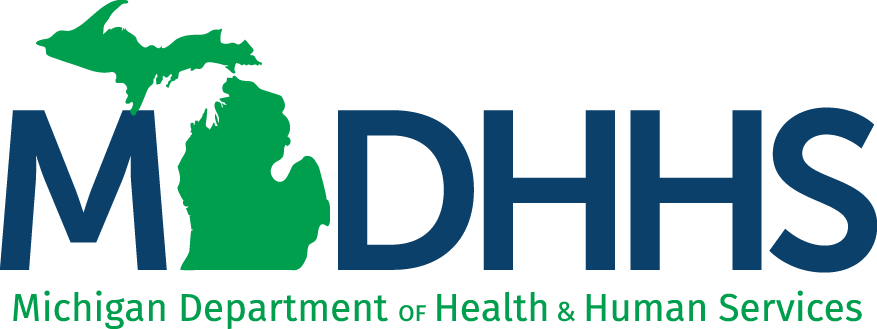|
Press Release FOR IMMEDIATE RELEASE: April 27, 2021 MDHHS CONTACT: Lynn Sutfin, 517-241-2112, Sutfinl1@michigan.gov Dashboard launched for COVID-19 wastewater LANSING, Mich. – A statewide COVID-19 wastewater monitoring program piloted in 2020 resulted in all 20 participating sites detecting the presence of SARS-CoV-2 in wastewater samples. The results hold promise for future efforts to detect and respond to outbreaks of the virus, according to data published today by the Michigan Department of Health and Human Services (MDHHS) and the Michigan Department of Environment, Great Lakes, and Energy (EGLE). EGLE has developed a dashboard to display data from the pilot project. In conjunction with this dashboard, EGLE created a story map website that elaborates on this collaborative wastewater surveillance pilot project and includes an interactive data summary. "EGLE is proud to bring its expertise in testing and data management to support this important, potentially life-saving work," said EGLE Director Liesl Clark. "This project is yet another great example of state agencies working collaboratively with universities, municipalities and local health departments to slow the spread of COVID-19." From April 5, 2020 to Dec. 30, 2020, a total of 3,204 wastewater samples were tested for the SARS-CoV-2 virus that causes the COVID-19 disease. Of those samples, 62.5%, or 2,003 of 3,204 samples, were positive for the virus. Positive detections occurred at a variety of community and congregate living settings across Michigan. The Michigan COVID-19 Wastewater dashboard provides viewers with data from the October-December 2020 pilot project, including the types of wastewater samples collected, the testing methods used and the number of SARS-CoV-2 genes detected in wastewater at each individual sampling site. Additional data, starting in April 2020, is also included from sites that began collecting wastewater samples prior to the start of the pilot project. From Oct. 1, 2020 to Dec. 30, 2020, the average positivity rate of all sampling sites combined was 66.3%. A few sites did not experience any positive detections throughout the pilot project, while many sites had 100% of their samples test positive. During this time, clinical case numbers of COVID-19 slowly increased in October, continued increasing and peaked in November, and began to decline in December, although case numbers were still high for most of the month. Most wastewater testing results showed similar trends, and many sites experienced increased levels of virus detections in November and early December. Wastewater testing results from individual sites can be viewed on the data dashboard. "Wastewater monitoring provides valuable data regarding the presence and trends of COVID-19 in a community," said Dr. Joneigh Khaldun, chief medical executive and chief deputy for health. "It allows health officials to detect the spread of SARS-CoV-2 in Michigan communities and use this data to support public health responses." Some participating universities used wastewater surveillance data to focus clinical testing efforts on campus. Hope College in Ottawa County used wastewater results to focus their testing efforts in dorms, which allowed for identification and isolation of infected students. The testing also helped identify asymptomatic students that most likely would not have otherwise been identified. Their results have shown that after removing infected students from the affected dorm, the virus signal in wastewater disappears. Ferris State University in Mecosta County observed a spike in SARS-CoV-2 in wastewater at a dorm a week after Halloween. This spike was followed by a second, smaller spike about 10 days later and then an additional third spike about 20 days later. These increased detections in wastewater most likely were the result of secondary and tertiary transmission through the campus student population. Following each increased detection of the virus in wastewater, campus officials increased their communication efforts to encourage COVID-19 testing of residents in the affected buildings. While COVID-19 wastewater monitoring is a new science and will continue to evolve over time, there are currently limitations on how this data can be interpreted and utilized. Most of the project data are not yet normalized for factors that can affect the amount of virus in wastewater, such as flow rate of the wastewater and population size. This means that more information is needed to compare wastewater data across different sample sites. The average amount of SARS-CoV-2 virus shed by an infected individual in their feces is also currently unknown. Therefore, wastewater data cannot determine the total number of infected persons in a community or the percent of the population that is infected. The results from the pilot project have shown that a wastewater surveillance project of this scope and size is feasible and can provide value to local communities in their fight against the spread of COVID-19. Using wastewater surveillance data, in addition to clinical case data, can inform public health decisions and impact the public health response to COVID-19. To continue wastewater monitoring in local communities, MDHHS is working to reestablish the coordinated wastewater monitoring network, now called the SARS-CoV-2 Epidemiology – Wastewater Evaluation and Reporting (SEWER) Network, that was developed through the pilot project. Even as COVID-19 cases decrease in a community, this type of monitoring can provide an early warning sign to help detect potential outbreaks, identify new areas of disease transmission and help evaluate vaccination efforts. Additionally, wastewater monitoring can now be used to preliminarily detect variant strains of SARS-CoV-2 in wastewater samples. Future data from the SEWER Network will continue to be made publicly available on the COVID-19 Wastewater dashboard. Local projects communicate testing results within 24 hours or less which provides timely data that local health departments and other stakeholders can evaluate and act upon. To view data from the pilot project, visit the Michigan COVID-19 Wastewater dashboard. To receive notification of updates to the dashboard, individuals can sign up for EGLE's Maps and Data Updates GovDelivery list. For more details about the pilot project, visit the EGLE story map website, and for more information on wastewater monitoring, visit the State of Michigan Wastewater Surveillance for COVID-19 website. ###
|
Tuesday, April 27, 2021
FOR IMMEDIATE RELEASE: Dashboard launched for COVID-19 wastewater monitoring pilot project results
Subscribe to:
Post Comments (Atom)



No comments:
Post a Comment